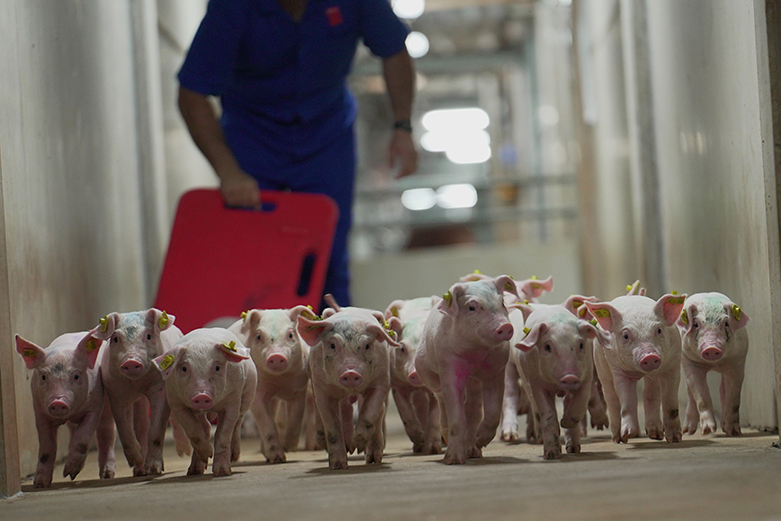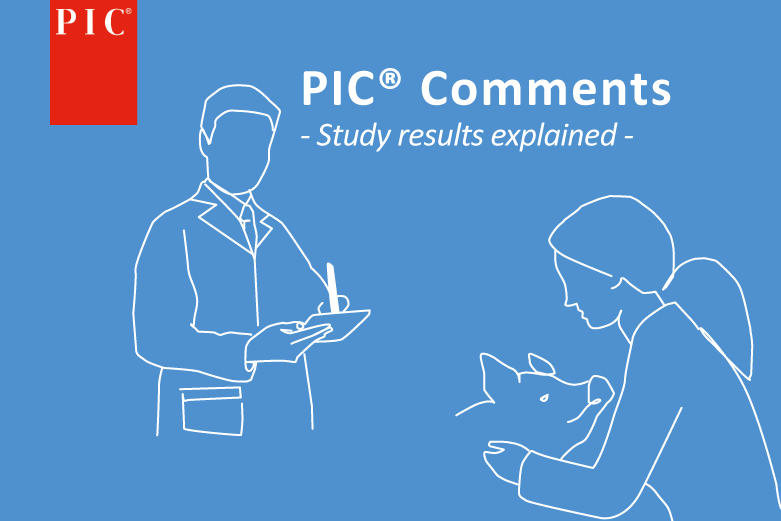Establishing reproductive protocols at the end of gilt rearing is essential for the long-term success of farms and to ensure a proper introduction of gilts into production herds. The aim of the study was to evaluate whether the correct selection of gilts based on stimulation and detection of puberty by boar contact is associated with productive differences during their lifetime.
In this study, to assess the productive life of the gilts, a total of 6,085 Camborough reared at a gilt development unit (GDU) were included (21 month period). The mature cyclic gilts were sent to a production farm. At the GDU, a boar exposure area was designated to stimulate the detection of puberty (oestrus signs when a boar is present). From 170 days of age, the gilts had direct contact with at least 6 adult males, with an exposure period of 15 minutes per day for 28 days. On day 14, the non-cycling gilts were mixed into new groups. Non-cycling females on day 23 (with no record of vulval development) were treated with PG600 to induce puberty. Females showing no sign of puberty at 28 days were considered unselected (NOSEL).
At the end of the rearing phase, 75% of the females were considered selected (SEL) (4,561/6,085). In practice, 4,980 gilts were mated at the production farm. 3,276 of the group expressed oestrus without intervention (SEL) and 1,137 showed oestrus after PG600 treatment (SELPG). The two other groups – females that did not express oestrus spontaneously (NOSEL, N = 417) and females that did not show signs of puberty after PG600 treatment (NOSELPG, N = 150) – were categorized as ‘not selected’ (for commercial use) but were sent to the farm for follow-up and comparison with the selected females.
The SEL group achieved the highest percentage of inseminations and farrowing rate from first services (P ≤ 0.05). However, once the gilts of the different groups were successfully mated, the percentage reaching parity 4 and the sum of total born and weaned piglets in those 4 cycles were not different between the groups (P > 0.05). Therefore, effective selection of gilts, linked to successful introduction into the herd, is a critical factor in the productive life of the sow.
| Parameter | SEL | SELPG | NOSEL | NOSELPG |
|---|---|---|---|---|
| % mated | 97.9 | 96.6 | 94.3 | 88.9 |
| % Farrowing rate from 1st matings | 94.3 | 91.0 | 89.2 | 86.0 |
| % Sows with 4 parities | 73.0 | 70.2 | 70.0 | 70.4 |
| Sum of total born in 4 litters | 55.2 | 55.0 | 54.2 | 55.7 |
| Total number of weaned piglets in 4 litters | 42.9 | 42.4 | 43.7 | 43.0 |
1 University of Alberta, Canada, 2 Holden Farms Inc., Northfield, USA, 3 PIC
PIC Comments
María Ros and Patricia Blanco, Technical Service PIC Southern Europe
Early stimulation of P0 females by direct boar contact is vital to onset puberty. In addition, the right age and weight at the time of insemination are crucial to ensure a successful productive life in the production herd.
To this end, it is important to have boars in appropriate quality and quantity available for the respective group of young females. It is also important to take into account the period of exposure, so that both the females and the boars do not get tired and lose interest.
It is necessary to document the results of puberty stimulation to be able to inseminate gilts in their second or third oestrus, as this is one of the most important objectives for the gilt to be able to express her full potential.
According to the above study, females with direct boar stimulation and showing spontaneously oestrus are inseminated at a higher rate than the rest. Sows that do not show natural oestrus and need hormonal treatment, have similar reproduction results as sows that cycled naturally, although the number of sows inseminated from this second group was lower. Therefore, hormonal treatments are a very helpful tool for sows that are unable to express oestrus on their own.
These protocols will be used for studies of more complex relationships between litter origin of the gilt, selection results at the end of rearing and the productive life of the females.
Originally published in “Investigación Comentada – SUIS”




